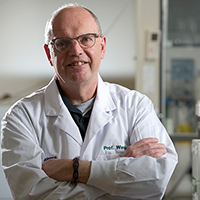
Keith Warriner, Ph.D.
Title
Professor
Company
University of Guelph
Keith Warriner, Ph.D., will speak on using a novel surface disinfection method to inactive Salmonella on Tuesday, April 30, at 1:30-1:55 p.m. during the “Pet food safety and regulatory updates” concurrent sessions. Register now to hear Keith and 30+ other industry experts speak at Petfood Forum 2024.
What is the single, most important concept you hope attendees will learn from your presentation?
To be aware that the gas phase-hydroxyl radical process offers an intervention against Salmonella and other pathogens. The process is continuous with no negative effects on product quality be it fresh, frozen or low-moisture.
Please explain the significance of this concept to the pet food industry:
The raw pet food sector has experienced several outbreaks and recalls in recent times due to contamination by Salmonella. This has led to a negative perception of the safety of raw pet foods leading to experts and competent authorities to recommend that susceptible pet owners avoid using the product. The gas phase-hydroxyl radical process is currently applied in a diverse range of applications from decontaminating frozen berries to hatchery eggs. Therefore, the proven technology will provide a risk management tool to ensure raw pet food products are safe thereby protecting, if not expanding markets.
Please explain the significance of this concept to your organization:
As researchers we like to see the results within the laboratory make a difference to in the community. For Clean Works Ltd who commercialized the hydroxyl-radical technology, it is a means to make the industry aware of the technology, in addition to diversifying applications.
What are potential next developments or stages in this specific field?
Where do you hope future development or research takes it, or how you plan to progress it? To date, the research has demonstrated proof-of-principle that different types of pet food can be treated with the hydroxyl-radical process. The next stage is to scale the process and verify performance to inactivate a broad range of pathogens along with confirming no changes in the quality and nutritional value of the product. Current research is investigating the chemistry involved in generating hydroxyl-radicals along with treating diverse range of food commodity types. For example, a current project is developing a hydroxyl-radical unit for sanitizing low-moisture-food environments along with other processing lines that are sensitive to moisture.
Presentation Description:
Novel method to decontaminate dry, fresh or frozen pet food — Dr. Warriner provides studies to date on using a novel surface disinfection method, the gas phase hydroxyl-radical process, to inactive Salmonella and Listeria monocytogenes introduced onto dry, fresh or frozen pet food without changing the product characteristics. The novel process is based on the UV-C degradation of ozone gas and hydrogen peroxide mist.
Experience:
Keith Warriner, Ph.D., is a professor in the Department of Food Science at University of Guelph, Canada. He received his bachelor’s degree in food science from the University of Nottingham, UK, and doctorate in microbial physiology from the University College of Wales Aberystwyth, UK. In the last 25 years in the field of microbiology and food safety research, Warriner has published more than 200 papers, book chapters, patents and conference abstracts. His research interests focus on enhancing food safety within meat processing, fresh cut sectors and, more recently, in the area of marijuana edibles.

